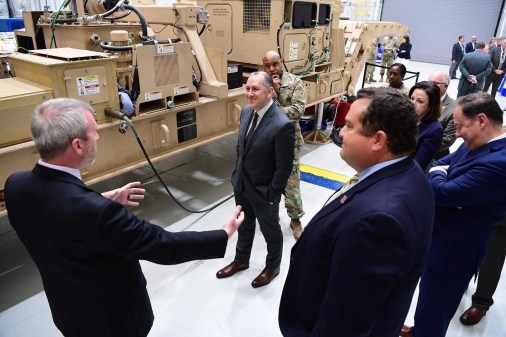Senior Air Force official voices caution about increasing OSD’s involvement in JADC2

Pentagon officials and others have warned that the military services aren’t aligned on the concept of Joint All-Domain Command and Control (JADC2) and need more guidance. But having the Office of the Secretary of Defense take on more responsibility for shepherding the initiative wouldn’t necessarily be the right move, according to a senior Air Force official.
The Departments of the Air Force, Army and Navy each have separate initiatives that are expected to contribute to JADC2, which aims to better connect the services’ disparate sensors, shooters and networks to improve warfighting effectiveness. For the Army, it’s Project Convergence, for the Navy and Marine Corps it’s Project Overmatch, and for the Air and Space Forces it’s the Advanced Battle Management System (ABMS).
However, some observers see problems with how things are going and argue that more direction is needed from a higher level to make sure the various DOD components are in sync.
One potential solution would be to have the Office of the Secretary of Defense (OSD) take a firmer hand in shepherding and coordinating JADC2 efforts. On Thursday, FedScoop asked Tim Grayson, special assistant to the secretary of the Air Force for mission-centered analysis and operational imperatives, if that would be a good idea.
“It depends,” he said at a conference on integrated networked systems of systems, hosted by ExecutiveBiz. “What do you want them to do?”
“The concern I’ve got with OSD — this is not a knock on OSD … [but] we have a propensity within our government that says whatever your span of authority is, that is also your span of responsibility. So if I say OSD needs to have oversight of all of these things, then the scope — because I want lots of adaptability and lots of option space — the scope’s going to be huge. Then if it turns into I’ve got to worry about, as OSD, every little aspect of all that, I’m back to my complexity slide now from a bureaucratic perspective,” he said. “Just adding another layer of oversight function to all this I think just adds more confusion and complexity.”
A better approach would be to create more narrowly focused teams for “mission integration management,” Grayson suggested.
“You can build them out to very focused ad hoc teams that could dig down and be less overseers than facilitators. So they would go focus in on very specific problems, and if there are issues where the services can’t work things out themselves, then they become the firefighters to go help the services fix those problems — or maybe the people with the Rolodex that can go find the right people” to solve them, he said. ”If OSD did something like that, I would say, ‘Awesome.’”
Grayson’s comments came the week after another senior Air Force adviser sounded the alarm about the current state of affairs.
“Every service has their own interpretation of JADC2. The Department of Air Force is ABMS, the Army is Project Convergence and I think the Navy and Marine Corps … [Project] Overmatch. All different. I’ve looked at all of the documentation associated with all three. We are not aligned with what we need to be to be interoperable to be able to fight together,” Wanda Jones-Heath, the principal cyber adviser for the Air Force and Space Force, said July 26 at the annual Air Force Summit hosted by the Potomac Officers Club.
“Someone needs to just push us where we need to go because we are way out here, everybody’s doing their own part. We’re investing tremendously in those capabilities, but we just need to take a step back, we need some leadership to push us in the right direction,” she added.




